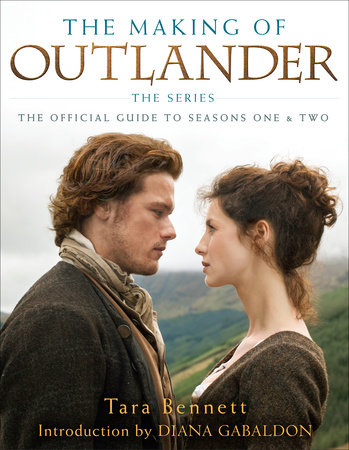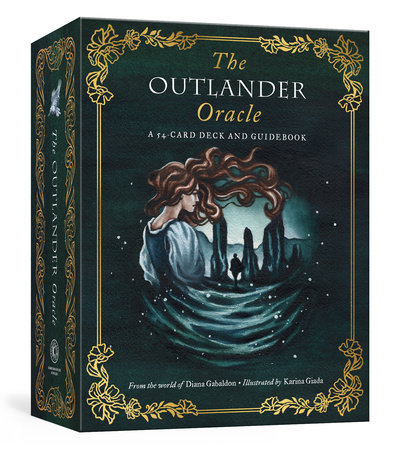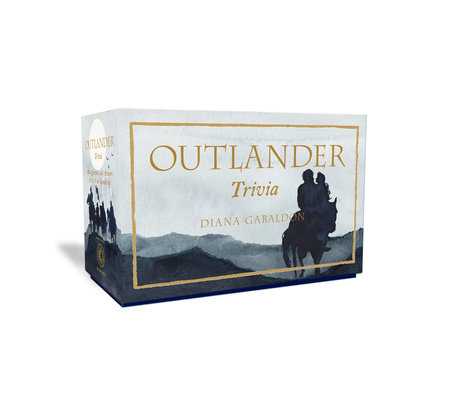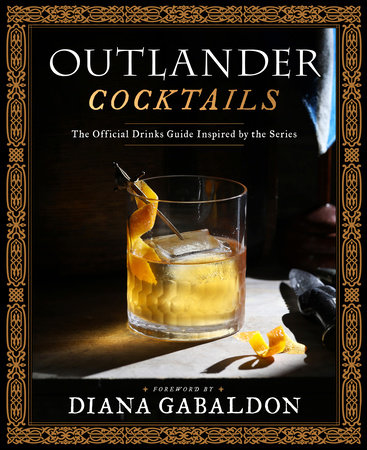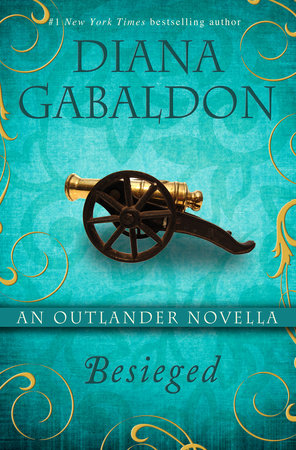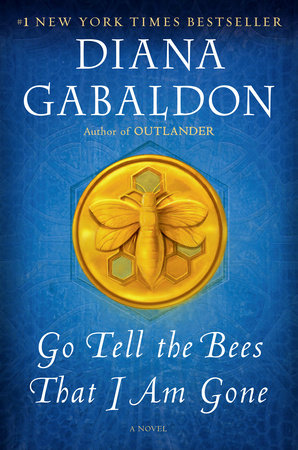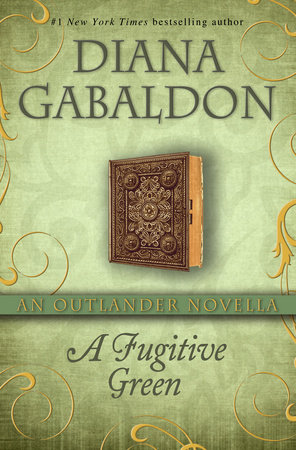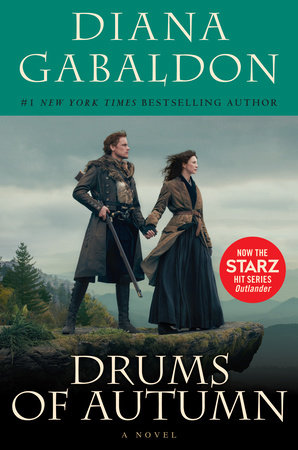Excerpt
The Making of Outlander: The Series
Chapter 1
Outlander: The Origins
“Will we ever get to see Outlander adapted for the screen?”
Since the novel first came out in 1991, author Diana Gabaldon has fielded that question from enthusiastic readers almost daily. The story of Claire Beauchamp Randall and Jamie Fraser seemed an obvious choice for a cinematic retelling, but the project was not without its logistical challenges. With the novel weighing in at more than 600 pages, the core dilemma always centered on how much of the action-packed adventure would have to be cut just to fit the traditional cinematic window of two hours. With too much to lose to the proverbial cutting room floor, the world of Outlander remained strictly in the realm of print.
It wasn’t until around 2010 that a possible solution started to present itself: a television series. Maril Davis, a development executive/co–executive producer for Ronald D. Moore’s Tall Ship Productions, was looking for potential properties to produce and had the books recommended to her by friend and softball teammate Matthew B. Roberts.
“[Roberts] had read the books as a reader during one of his first jobs,” Davis explains. “He passed on the books because they wanted to do movies but told me they would be great for TV. I took him up on that and read them all the way through.
“I loved them,” Davis says with unabashed adoration. “This to me was my passion project.”
But the television landscape at the time wasn’t yet the haven for high-concept sci-fi series it seems to be today. “Game of Thrones was not on at that point. Ron had tried to do Dragonriders of Pern. It just didn’t feel like the timing was right.”
Cut to a personal dinner Davis was having with Moore and his wife, Terry Dresbach, where the three started talking about the projects they had always longed to do. “I said, ‘My passion project is this book series called Outlander, and I would love to do them,’ ” Davis recalls. “I didn’t realize Terry was also a fan. So we talked, and Ron seemed intrigued.”
“Terry and I talked about it after the dinner a few times,” Moore remembers. “But it wasn’t really until I sat down and started reading the book that I saw the potential.” From that first read, he says, he was struck by how Gabaldon’s writing kept surprising him. “By the time I got to the end of the book, there had been some significant twists and turns that I didn’t see coming. In my head, I could definitely see a season of television and how it works through a season. Plus the fact that, at that point, there were multiple books in the series just meant that it had a life beyond season one. I remember thinking, If the other books are anywhere near as good as this, then essentially I’m in.”
Davis was thrilled to get the go-ahead to pursue. “I got in touch with the rights holder, Jim Kohlberg. We had a great meeting, but it was very obvious that they wanted to do this book series as films.” Davis left the meeting convinced a film would not do justice to the books. “Reluctantly, we walked away,” she says.
“But I was like a dog with a bone,” she continues, laughing. “I just kept checking back every once in a while. One of the times, they were open to doing TV. So Ron and I went back in there and had a fabulous meeting, and it kind of started there.”
Davis says they pitched Chris Parnell, executive vice president of Sony Pictures Television, to be their studio partner, but he was unfamiliar with the books. “To his credit, Chris went out and bought the book on tape and listened in his car, which was so cute,” she says. “He would call me every once in a while and be like, ‘I am sitting in my car blushing,’ which was hilarious.” By the book’s end, Davis says, Parnell was on board and ready to champion the show to the networks.
The next step for Moore and Davis was to officially visit Gabaldon at her Scottsdale, Arizona, residence. “Just from the fan perspective, not even a producer perspective, I felt it was so important to get her approval,” Davis says. “I wanted her approval and just to make sure she was comfortable that this book was in the right hands. I wanted to assure her that we weren’t trying to exploit it and we understood what it was. There was Ron’s track record, certainly as an amazing writer but also as someone who obviously writes very strong female characters, from Battlestar Galactica to Carnivàle. I also wanted her to know that I was going to protect the series as well, it being so close to my heart and near and dear to me.”
For Gabaldon, having the books in serious development after so many years of thinking it couldn’t work was beyond surprising. “People are always asking, ‘Why is it that you held out for Ron?’ The truth is that I didn’t,” she says with her trademark candor. “We were very careful who we did options with, because there was always a possibility that they would succeed. In which case, you will never get the rights back. We had done this only four times and, luckily, none of the first three times took.”
But it seemed an Outlander series was finally about to happen in earnest. Gabaldon recalls that she was very curious about the pair who made it happen. “They came and spent two days with me at my house, talking over story lines, characters, and backstory. Asking had I written anything that wasn’t in the books that they should be aware of? Where did I see the story going? Ron was sharing with me his vision of storytelling and what he thought of the characters. I could tell that we were pretty much on the same wavelength with regard to the importance of a central character in a story, which predisposed me to him.”
Gabaldon was also impressed during those initial meetings by the clarity of the vision Moore had for the series. “He began to share his own philosophy and his take on how things would work,” she goes on. “He said he would like to start [the series] with a little visual prologue that takes place before Outlander [the book] actually starts. He’d show Claire during World War II in a military hospital out in France, saving people’s lives. She is a central character, and we need to fix her in people’s consciousness immediately as the main person of interest. And I am sort of nodding as he is saying all this and going, ‘Yes. You are right.’ I could tell he did know what he was doing and I approved the direction he saw for doing it.
“I gave them my blessing to start the script the way Ron wanted to,” Gabaldon explains. A few days later, Moore sent over his pilot script. “I told him when I read it, this is the only thing that I have ever read based on my own work that didn’t make me turn white or burst into flames, so I was favorably impressed.”
Moore says gaining Diana’s favor gave them reassurance that they were taking the right direction with her work, which he felt was important given how devoted the series’ readers have proven themselves to be over the years. “We really wanted to engage and keep the fan base that was already there from the books and transfer them over to the TV show,” Moore explains. “Diana had her finger on that pulse for many, many years. She knew them pretty intimately, communicated with them, and had a good sense of what was important to them. She was a good indicator of where we were. She kept us in the lane.”
For Davis, Gabaldon’s approval gave the series the ability to credibly move forward. “I don’t know if we could have gone ahead, in my mind, without her approval in some way. We didn’t technically need it, because obviously at that point we had secured the rights. But I think for me, having her approval and having her on board with what we were doing was incredibly important, and I don’t think we could have done it without her.”
Finding the right home for the show was the next step, which required the ever-growing Team Outlander—at this point comprised of Davis, Moore, and Parnell as well as Sony executives Jamie Erlicht and Zack Van Amburg—to once again pitch the idea. But Davis says Starz impressed from the very first meeting. “We would walk into every pitch meeting—me, Ron, the Sony executives—with this huge stack of [Diana’s] books to show them how much material there was. Starz was the only place we went that they had actually read the first book and were the only ones that also said to us, ‘We want you to stick to the books.’ ” Following that meeting, Outlander the television series was officially greenlit in November 2012 for development and a pilot.
Almost two years later, after hiring a writers’ room in Pasadena, California, setting up a transatlantic production in Scotland, and casting the characters readers had been picturing in their minds’ eyes for over two decades, Moore was able to share with Gabaldon the first footage of her world brought to life. Gabaldon remembers that it was behind the scenes at an Outlander fan event in January 2014 when Moore asked if she’d like to take a look. “I said, ‘Yeah, I would.’ He had it on his laptop and we were all sitting back there on this ratty old sofa. He opened his laptop and that is where I saw the first few scenes of Outlander. I was totally fascinated. It was beautiful and it was terrific.”
Just shy of twenty-three years from when Gabaldon first put to paper her story about a woman traveling back in time through standing stones, that story was taking on a new form, as actors breathed life into the beloved characters and the vast beauty of Scotland served as its backdrop. Outlander, the series, takes the story of Claire Beauchamp Randall and James MacKenzie Fraser into a whole new realm, and in this book, that journey is our story. . . .


